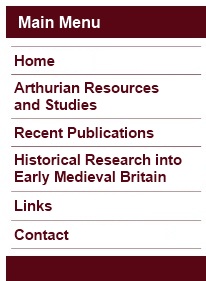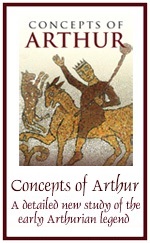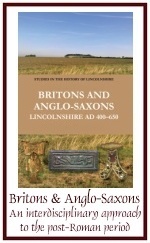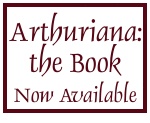 |
Britons and Anglo-Saxons:
Lincolnshire AD 400-650
Britons
and Anglo-Saxons was published on 18 September 2012
in both hardback and
paperback under a former nom de plume (336 pages, ISBNs 978-0-902668-24-9 and 978-0-902668-25-6).
It offers an interdisciplinary approach to the history of the Lincoln
region in the post-Roman period, drawing together a wide range of
sources. In particular, it indicates that a British polity
named *Lindēs was based at Lincoln into the sixth century, and
that the seventh-century Anglo-Saxon kingdom of Lindsey (Lindissi) had an
intimate
connection to this British political unit. The picture that emerges is
also of importance nationally, helping to answer key questions
regarding the nature and extent of Anglian-British interaction and the origins of Anglo-Saxon kingdoms.
Britons and Anglo-Saxons
is available in both paperback and hardback and hardback from Amazon and other
online bookstores, as well as direct from the publishers via their website. It is also available as a PDF ebook from the Google Play Books store and Lulu.com (DRM free). A sample preview of Britons
and Anglo-Saxons can also be read online at Google
Books by clicking the button
below, which also offers links to various online book stores and ebook purchasing:
from Amazon and other
online bookstores, as well as direct from the publishers via their website. It is also available as a PDF ebook from the Google Play Books store and Lulu.com (DRM free). A sample preview of Britons
and Anglo-Saxons can also be read online at Google
Books by clicking the button
below, which also offers links to various online book stores and ebook purchasing:

 


|
“It was a
pleasure to be asked to review this book. It is rare that one has the
opportunity to read a county-based study focused on the problems of the
British Dark Ages which is both so fully engaged with up-to-date
scholarship and operating assuredly across all relevant disciplines –
history, archaeology and place-name studies, plus occasionally
historical genetics and palaeoecology. Not only does it offer a
sophisticated study of Dark-Age Lincolnshire but it also makes an
important contribution to wider debates about the ending of Roman
Britain and the beginnings of Anglo-Saxon England...
“This
inter-disciplinary exploration of *Lindēs offers a new standard for
regional work. It also provides a model capable of explaining how Roman
Britain transmuted into Anglo-Saxon England, emphasising continuities
in local and regional structures as well as population, alongside
significant immigration... this book makes an important contribution to
the central historical debates and will provide an important point of
reference as to how we model the British/Anglo-Saxon interface for the
next generation.”
(Nicholas Higham,
Professor of Early Medieval and Landscape History, University of
Manchester – read full review) “Britons and Anglo-Saxons
is an impressively interdisciplinary book that combines linguistic,
historical, literary, and archaeological evidence into a coherent
narrative for the post-Roman fate of Lincolnshire... [the] central
contention that “the Britons based at Lincoln in the fifth and sixth
centuries left a political, administrative, cultural, and even
potentially a symbolic, legacy for succeeding centuries” (153) is amply
borne out by [the] thorough interdisciplinary methodology, and [Green's]
findings are sure to have an impact on the wider historiography of
early-medieval British history... a major accomplishment by a promising
young scholar...”
(Speculum: the Journal of the Medieval Academy of America) “[A]
well-researched and stimulating book... Green makes a compelling case
for a post-Roman British-speaking people and polity based on Lincoln,
from which an Anglo-Saxon kingdom developed.”
(History: the Journal of the Historical Association) “This
book, based on the author’s doctoral thesis, explores the relationships
between British and Anglo-Saxon populations in post-Roman Britain and
the formation of kingdoms, using Lincolnshire as a case study... As an
exploration of the aftermath of Roman Britain, the relationships
between native populations and immigrant communities, and the
mechanisms behind the development of subsequent administrative units,
this book makes for a very thought-provoking read... It is a welcome
addition to our understanding of the early centuries of post-Roman
Britain.”
(Medieval Archaeology) “This
book should recommend itself to the introductory reading lists of
history and archaeology students but will also serve the general reader
well. Green clearly sets out the undoubted importance of an
interdisciplinary approach to the study of this period, while at the
same time recognizing the limitations inherent in some of these
methodologies. This study draws upon the combined application of
history, archaeology, place-names, and early literature to reconstruct
its narrative — approaches that one would wish to see duplicated across
the country... This book not
only provides a narrative for Lincolnshire but also reinforces the
potential value of similar approaches elsewhere in Britain while at the
same time offering a compelling introduction to the challenges of
studying this period of Britain’s past.”
(Midland History) “...a
lively and convincing account of a neglected British kingdom, admirably
multidisciplinary in approach and alive to questions of wider interest,
such as Anglo-Saxon kingdom formation and the survival of Roman society
after AD 410. It makes for a good story, engagingly told.”
(The Archaeological Journal)
|
Further Details:
Britons and Anglo-Saxons offers
an interdisciplinary approach to the
period between c.
AD 400 and 650 in the Lincoln region, considering in depth not only the
archaeological evidence, but also the historical, literary and
linguistic. It is argued that by using all of this material together,
significant advances can be made in our understanding of what occurred
in these centuries, most especially with regard to Anglian-British
interaction in this period. It is contended that this evidence, when
taken together, requires that a British polity named *Lindēs was based
at Lincoln into the sixth century, and that the seventh-century
Anglo-Saxon kingdom of Lindissi
(< Late British *Lindēs-)
had an intimate connection to this British political unit.
In
addition to investigating the evidence for Anglian-British interaction
in this part of eastern Britain and the potential legacies of British *Lindēs, Britons and Anglo-Saxons
also provides a detailed analysis of the nature of the Anglo-Saxon
population-groups that were present in the Lincoln region from the
mid-fifth century onwards, including those of *Lindēs-Lindissi
and also more southerly groups, such as the Spalde/Spaldingas.
The picture which emerges is arguably not simply of importance from the
perspective of the history of this region but also nationally,
helping to answer key questions regarding the origins of Anglo-Saxon
kingdoms, the nature and extent of Anglian-British interaction in the
core areas of Anglo-Saxon immigration, and the conquest and settlement
of Northumbria.
'Britons
and Anglo-Saxons' consists of the following chapters:
| Intro |
Previous Approaches, Sources and
Methodology
|
| Chapter 1 |
The Context of Post-Roman Lincolnshire
|
| Chapter 2 |
The British Country of *Lindēs
|
| Chapter 3 |
Anglian-British Interaction and the End of the
‘Country of *Lindēs’
|
| Chapter 4 |
Lindissi and the Legacy of *Lindēs |
| Chapter 5 |
The Population-Groups of Early Anglo-Saxon
Lincolnshire |
| Chapter 6 |
Lindisfarne, the Lindisfaran, and the Origins of
Anglo-Saxon Northumbria
|
| Conclusion |
The Significance of *Lindēs and Lindissi
|
Dr Green is currently undertaking research at the University of
Oxford.
* * * * *
Copyright
© 2011, 2014 Caitlin R. Green. All
Rights Reserved. To cite articles or pages from this website, use a
service such as WebCite
or alternatively see one of the following style citation guides. Comments and queries via email to Caitlin R.
Green.
|
   |





